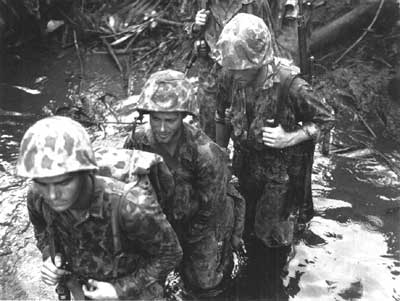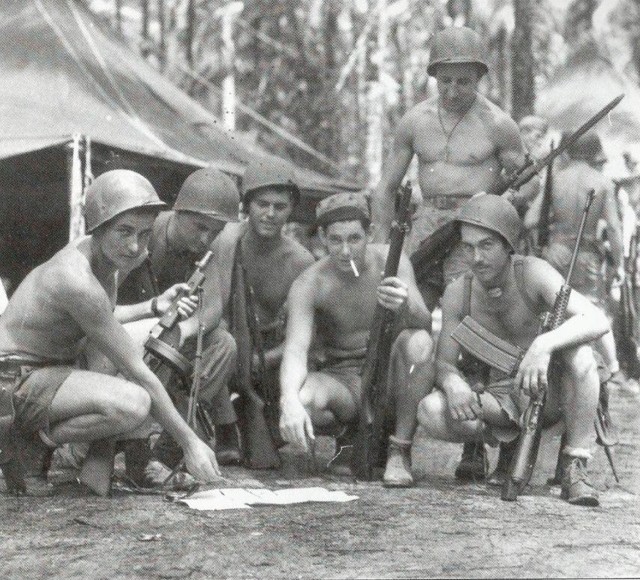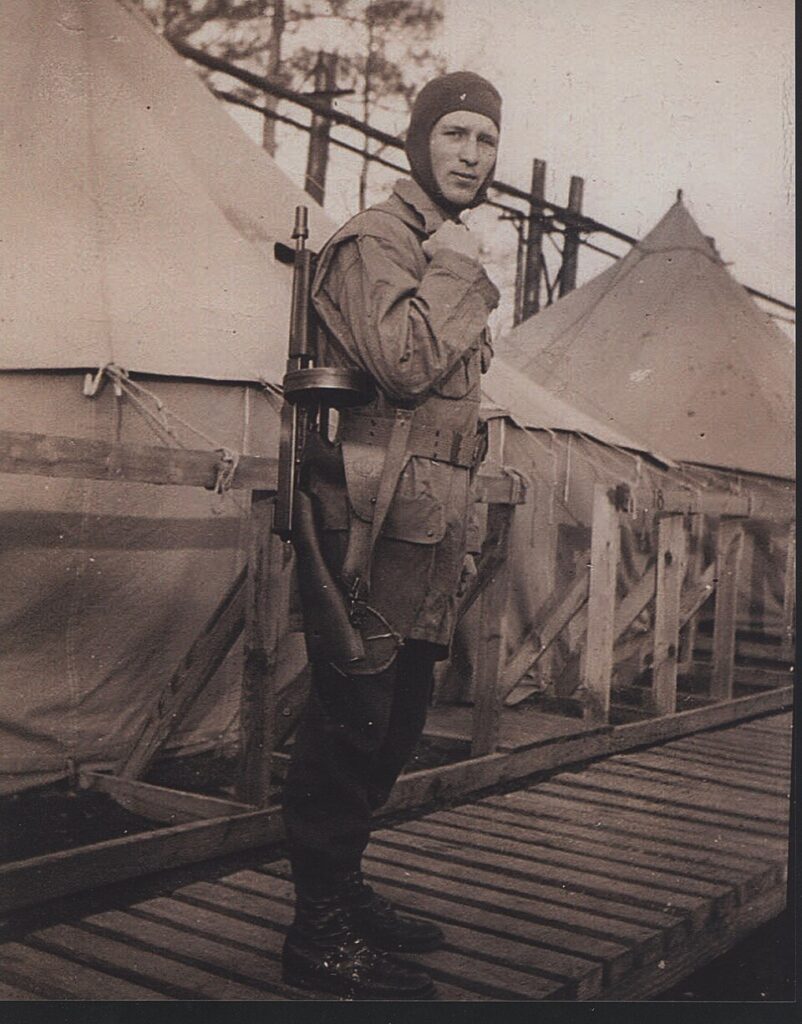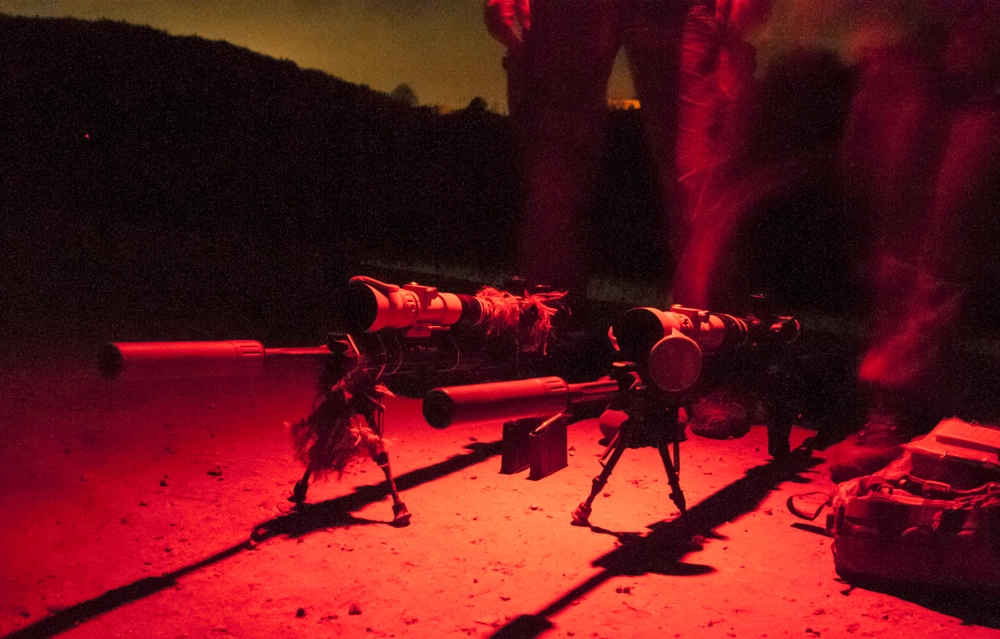During WWII the Marine Corps created an elite unit to deploy from parachutes
- By Travis Pike
Share This Article

The first large-scale, opposed airborne assault in history was conducted in May 1940 by Nazi Germany’s Fallschirmjäger against the Netherlands and was a mixed success. The operation gained the attention of Major General Thomas Holcomb, Commandant of the Marine Corps. So, Holcomb ordered the creation of a similar unit in the United States Marine Corps; the unit would become known as the ParaMarines.
The ParaMarines saw success in the Pacific. They were often compared favorably to the Marine Raiders and served as an elite light infantry unit within the Marine Corps. They even adopted a logo similar to the Raiders with a parachute surrounded by five stars. However, they never made a combat jump.
ParaMarines began training in October 1940 in New Jersey. The unit relied on unmarried volunteers, and to entice Marines to jump from perfectly good airplanes, it offered an extra $50 per month pay, which when adjusted for inflation amounts to over $1,100 in today’s money. The unit had a steady stream of volunteers, but the failure rate was high – 40% – during the 16-week course.
As America entered World War II, the unit’s training intensified, with Marines training at Camp Kearny and Camp Elliot, both in San Diego. The Marine Corps formed three battalions of ParaMarines: the 1st, 2nd, and 3rd. Each battalion was made up of three rifle companies and a headquarters company, which housed the demolition platoon. Rifle platoons were made up of riflemen, machine gunners, and each had a 60mm mortar.
In total, there were approximately 3,000 ParaMarines, and the three battalions formed the one and only 1st Marine Parachute Regiment of the I Marine Amphibious Corps.
The Marine Corps viewed ParaMarines as an auxiliary to amphibious assaults. The idea was that ParaMarines would jump ahead of the main amphibious landing force to conduct reconnaissance and seize crucial objectives like airfields or coastal defenses.
Four parachute operations were planned but none was ever executed as the Navy was reluctant to provide transport aircraft, and the island-hopping campaign wasn’t suitable for combat jumps.
The ParaMarines in action

The ParaMarines were all well-trained, well-disciplined, and in high physical shape. While they didn’t jump into combat, the Marine Corps wasn’t going to waste an elite light infantry unit.
The 1st Parachute Battalion participated in the Guadalcanal Campaign and seized the islands of Gavutu and Tanambogo. The ParaMarines lacked training in amphibious operations and landed without machine guns or their mortars. Yet, they were still able to seize Gavutu with ease, but the island of Tanambogo took two days to take and the ParaMarines suffered heavy casualties.
ParaMarines joined up with Marine Raiders near Henderson Field on Guadalcanal. The combined force fought a brutal battle that became known as the “Battle of Bloody Ridge.” They suffered heavy casualties but also inflicted heavy casualties on the Japanese.
The 2nd Parachute Marine battalion assaulted the island of Choiseul in October 1943. This landing was a diversion designed to keep the Japanese busy during the Bougainville Campaign. The feint was a success.
The ParaMarines harassed Japanese units and raided their positions while making themselves appear to be a much larger unit. They hit and ran, avoiding drawn-out engagements. To help them succeed, they were reinforced with machine gun and rocket platoons. By the end of the operation, the Marines had killed 143 Japanese.
By December 1943, the 1st and 3rd Parachute Marine battalions were slugging it out in Bougainville alongside the infantry.
Related: Operation Union 1 and 2 – Marines fighting behind French lines in WWII
The unit’s end

By 1944, it was abundantly clear that the Marine Corps wasn’t going to make any jumps and the ParaMarines were disbanded. The elite Marines were folded into the 5th Marine Division where they continued to serve with honor and distinction.
The 5th Marine Division was one of the formations that landed at Iwo Jima.
ParaMarine Sergeant Henry O. “Hank” Hansen was part of the first flag-raising on the island. Corporal Harlon H. Block and Private First Class Ira H. Hayes were part of the second flag-raising that was captured in Joe Rosenthal’s iconic photograph.
The organization of the ParaMarines and Raiders into small fire teams within the squad eventually became adopted by the entire branch.
The ParaMarines were never revived and parachuting isn’t a major part of Marine operations. Although Marine Recon, Raiders, and ANGLICO are parachute-trained, they conduct special operations, not general infantry assaults. Outside of that, it’s rare for Marines to attend Airborne School, and it is often a reenlistment bonus.(Yet, the Corps did had a short-lived parachute team in the 1960s which won the Adriatic Cup.)
For the time being, the enemies of America won’t experience Marines dropping from the skies.
Feature Image: A file of Marine parachutists crosses a stream on Bougainville in November 1943. (National Park Service)
Read more from Sandboxx News
- Ken Burns’ new documentary focuses on George Washington as genius military talent scout and motivator
- F-22 Raptor will become the first American jet to fly alongside drone wingmen
- Mark 9 SDV: The SEALs’ mini-sub that packed full-sized torpedoes
- How Charles Lindbergh helped American pilots fight the Japanese in WWII
- FN’s MTL-30 wins the Army’s Precision Grenadier contest for a next-gen grenade launcher
Related Posts
Sandboxx News Merch
-

F-35 ‘Evolution’ Poster
$22.00 – $28.00Price range: $22.00 through $28.00 Select options This product has multiple variants. The options may be chosen on the product page -

A-10 ‘Thunderbolt Power’ Framed Poster
$45.00 – $111.00Price range: $45.00 through $111.00 Select options This product has multiple variants. The options may be chosen on the product page

Travis Pike
Travis Pike is a former Marine Machine gunner who served with 2nd Bn 2nd Marines for 5 years. He deployed in 2009 to Afghanistan and again in 2011 with the 22nd MEU(SOC) during a record-setting 11 months at sea. He’s trained with the Romanian Army, the Spanish Marines, the Emirate Marines, and the Afghan National Army. He serves as an NRA certified pistol instructor and teaches concealed carry classes.
Related to: Military History

Energy drinks were the unsung hero of the Global War on Terror

The benefits of drones for the Marine Corps

The technologies that will unlock the next generation of firearms

5 benefits that martial arts can have for veterans
Sandboxx News
-

‘Sandboxx News’ Trucker Cap
$27.00 Select options This product has multiple variants. The options may be chosen on the product page -

‘AirPower’ Classic Hoodie
$46.00 – $48.00Price range: $46.00 through $48.00 Select options This product has multiple variants. The options may be chosen on the product page -

‘AirPower’ Golf Rope Hat
$31.00 Select options This product has multiple variants. The options may be chosen on the product page -

‘Sandboxx News’ Dad Hat
$27.00 Select options This product has multiple variants. The options may be chosen on the product page
